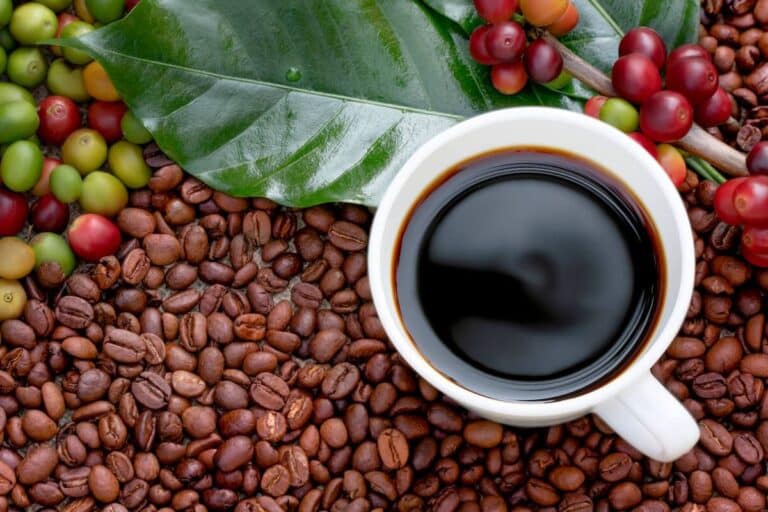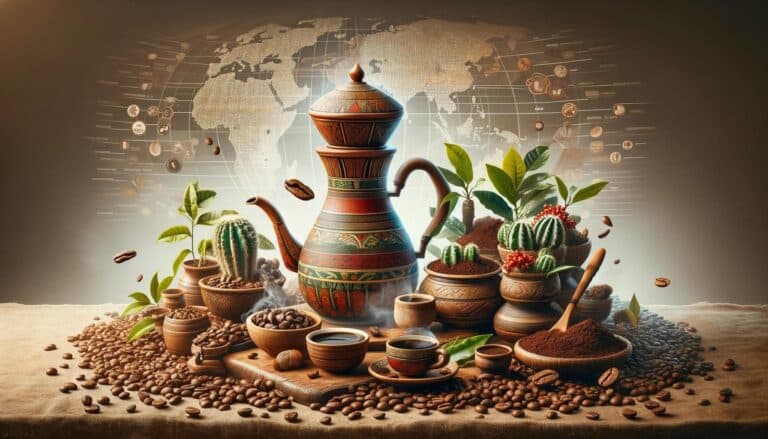Storing coffee correctly is crucial to maintaining its flavor and aroma. Coffee lovers know that the difference between a fresh, flavorful cup and a dull, lifeless one often comes down to how the coffee is stored. This article will guide you through the best practices for storing coffee to ensure that every cup you brew tastes as good as it should. From understanding the factors that affect coffee freshness to learning about the best storage solutions, you’ll find everything you need to keep your coffee in top condition.
Understanding Coffee Freshness

Coffee freshness significantly impacts its flavor and overall drinking experience. Fresh coffee retains its aromatic oils and flavor compounds, which can degrade over time if not stored properly. The main enemies of coffee freshness are air, moisture, heat, and light. Exposure to these elements can cause coffee to lose its flavor and become stale.
- Air: When coffee is exposed to air, it begins to oxidize, leading to a loss of flavor and aroma. This process starts as soon as the coffee is roasted and accelerates once the coffee is ground.
- Moisture: Coffee beans are porous and can absorb moisture from the air, which can cause the coffee to lose its oils and flavors. Moisture can also lead to mold growth.
- Heat: High temperatures can cause coffee to lose its volatile compounds, leading to a loss of flavor. Coffee should be stored in a cool environment to prevent this from happening.
- Light: Direct sunlight or strong artificial light can degrade coffee, causing it to lose its flavor. Light exposure can also heat the coffee, compounding the problem.
By understanding these factors, you can take steps to store your coffee in a way that minimizes exposure to air, moisture, heat, and light, ensuring that your coffee remains fresh for as long as possible.
Types of Coffee and Their Storage Needs

Different types of coffee require different storage approaches to maintain their freshness and flavor. Understanding the distinctions between whole beans and ground coffee is essential for proper storage.
Whole Beans vs. Ground Coffee
Whole Beans:
- Longevity: Whole beans retain their freshness longer than ground coffee because they have a smaller surface area exposed to air.
- Storage Needs: Store whole beans in an airtight container in a cool, dark place. This helps preserve their aromatic oils and flavors.
- Grinding Just Before Brewing: To maximize freshness, grind whole beans just before brewing. This ensures the best flavor and aroma in your coffee.
Ground Coffee:
- Quick Degradation: Ground coffee has a larger surface area, making it more susceptible to oxidation and flavor loss.
- Storage Needs: Store ground coffee in an airtight container away from light, heat, and moisture. Use it within a couple of weeks for optimal flavor.
- Convenience vs. Freshness: While pre-ground coffee is convenient, it sacrifices some freshness compared to grinding whole beans.
By understanding the specific storage needs of whole beans and ground coffee, you can choose the best storage methods to maintain their quality and enjoy the freshest cup possible.
Best Practices for Storing Coffee
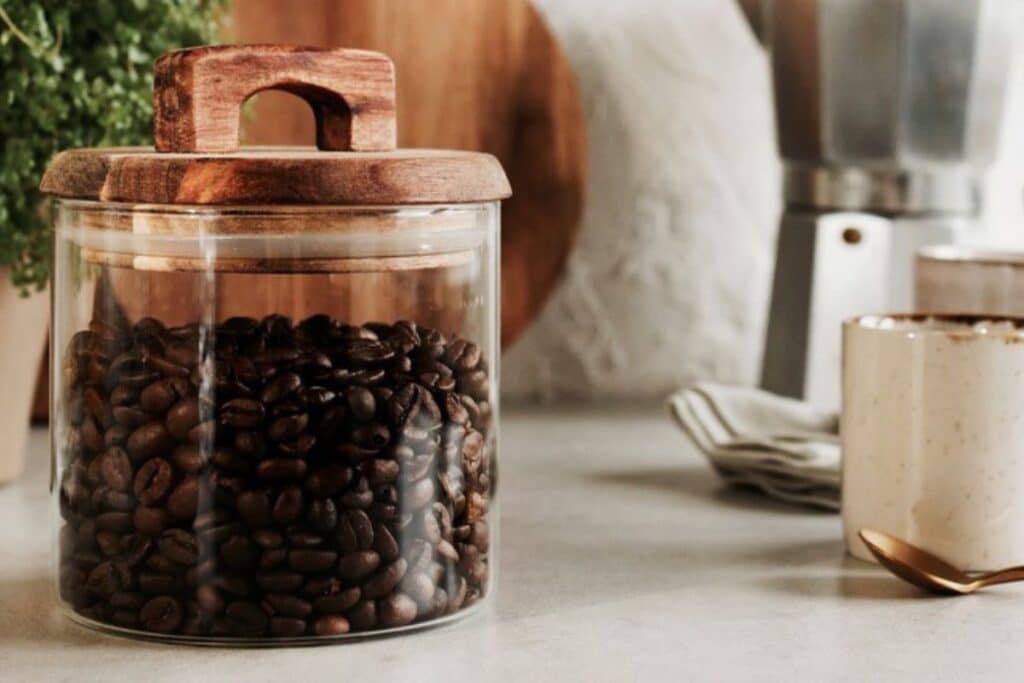
Proper storage techniques are essential to maintaining coffee’s freshness and flavor. Here are some best practices to ensure your coffee stays at its best.
1. Use Airtight Containers
- Importance: Airtight containers prevent exposure to air, which is the primary cause of coffee going stale.
- Recommended Materials: Use containers made of glass, stainless steel, or ceramic. These materials do not impart any flavors to the coffee and effectively block light.
2. Store in a Cool, Dark Place
- Ideal Temperature Range: Store coffee at room temperature, ideally between 60-70°F (15-21°C).
- Avoid Direct Sunlight: Keep coffee away from windows and direct sunlight, which can heat the coffee and degrade its flavor.
3. Avoid Refrigeration and Freezing
- Why to Avoid: Refrigerators and freezers can introduce moisture to the coffee, causing it to absorb unwanted odors and flavors.
- Exception for Long-Term Storage: If you need to store coffee for an extended period, freezing can be an option. However, ensure the coffee is in an airtight, vacuum-sealed bag to prevent moisture and odor absorption. Thaw frozen coffee at room temperature before opening to avoid condensation.
4. Buy in Small Quantities
- Benefits of Smaller Quantities: Buying coffee in smaller amounts ensures you always have fresh coffee on hand.
- Purchase Frequency: Aim to buy enough coffee to last one to two weeks. This frequency helps maintain maximum freshness without the coffee going stale.
Implementing these best practices will help you preserve the flavor and aroma of your coffee, ensuring a better tasting experience every time you brew a cup.
Specific Storage Solutions
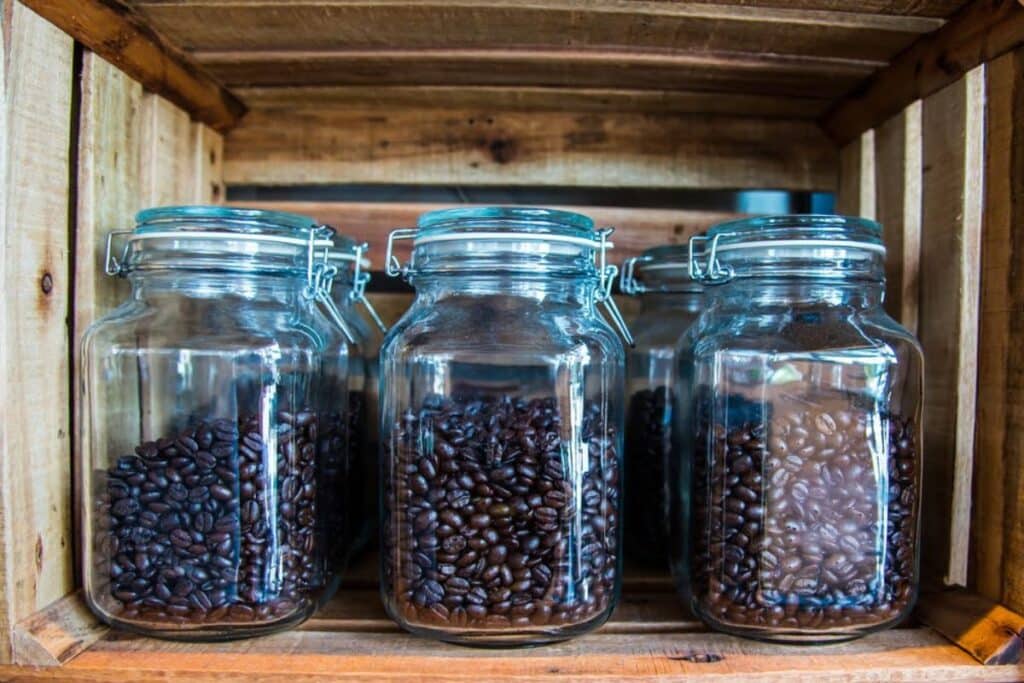
Choosing the right storage solution can make a significant difference in maintaining your coffee’s freshness. Here are some effective storage options to consider:
1. Vacuum Sealed Bags
- How Vacuum Sealing Works: Vacuum sealing removes air from the bag, reducing oxidation and extending the coffee’s shelf life.
- Pros: Keeps coffee fresh for longer periods; excellent for long-term storage.
- Cons: Requires a vacuum sealer; may not be convenient for daily use.
2. Coffee Canisters with CO2 Valves
- Explanation of CO2 Valve Function: Freshly roasted coffee releases carbon dioxide (CO2). Canisters with CO2 valves allow the gas to escape without letting air in.
- Benefits: Prevents the buildup of CO2 while keeping oxygen out, maintaining the coffee’s freshness.
- Recommended Usage: Ideal for storing freshly roasted coffee beans.
3. Specialized Coffee Storage Containers
- Overview: Containers specifically designed for coffee storage often come with features like airtight seals and opaque materials to block light.
- Features to Look For:
- Airtight Seal: Ensures no air can enter the container.
- Opaque Material: Prevents light exposure, preserving flavor.
- Durable Construction: Materials like stainless steel or ceramic are preferred.
- Examples: Brands like Airscape, Coffee Gator, and Friis offer specialized coffee storage containers.
These storage solutions help maintain the freshness and quality of your coffee, ensuring that you enjoy the best possible flavor with every brew.
Common Mistakes to Avoid
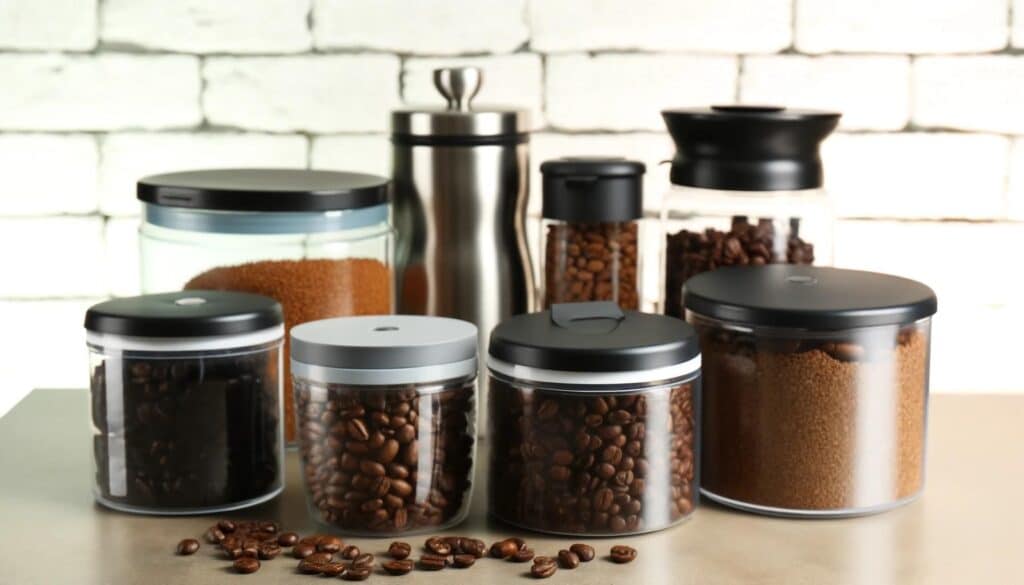
Proper coffee storage is essential, but many people unknowingly make mistakes that can compromise the flavor and freshness of their coffee. Here are some common pitfalls to avoid:
1. Storing Coffee in the Fridge or Freezer
- Why It’s a Mistake: The fridge and freezer introduce moisture and odors to the coffee, which can degrade its flavor.
- Better Alternative: Store coffee in a cool, dark place at room temperature. Only freeze coffee if you need to store it for an extended period and ensure it’s in an airtight, vacuum-sealed container.
2. Using Transparent Containers
- Why It’s a Mistake: Transparent containers allow light to penetrate, which can cause the coffee to degrade.
- Better Alternative: Use opaque containers made of materials like stainless steel, ceramic, or tinted glass to block light.
3. Keeping Coffee Near the Stove or Other Heat Sources
- Why It’s a Mistake: Heat accelerates the degradation of coffee, leading to loss of flavor.
- Better Alternative: Store coffee away from heat sources, such as the stove, oven, or any appliances that emit heat. A pantry or cupboard away from direct sunlight is ideal.
4. Not Sealing the Container Properly
- Why It’s a Mistake: Improperly sealed containers allow air to enter, which can cause the coffee to oxidize and lose flavor.
- Better Alternative: Ensure that your storage container has a tight, airtight seal. Check the seal regularly to make sure it remains effective.
5. Buying Too Much Coffee at Once
- Why It’s a Mistake: Buying in bulk can lead to coffee sitting around for too long, causing it to go stale.
- Better Alternative: Purchase coffee in smaller quantities that you can consume within one to two weeks. This ensures you always have fresh coffee on hand.
Avoiding these common mistakes will help you keep your coffee fresh and flavorful, enhancing your overall coffee experience.
How to Tell if Your Coffee Is Fresh
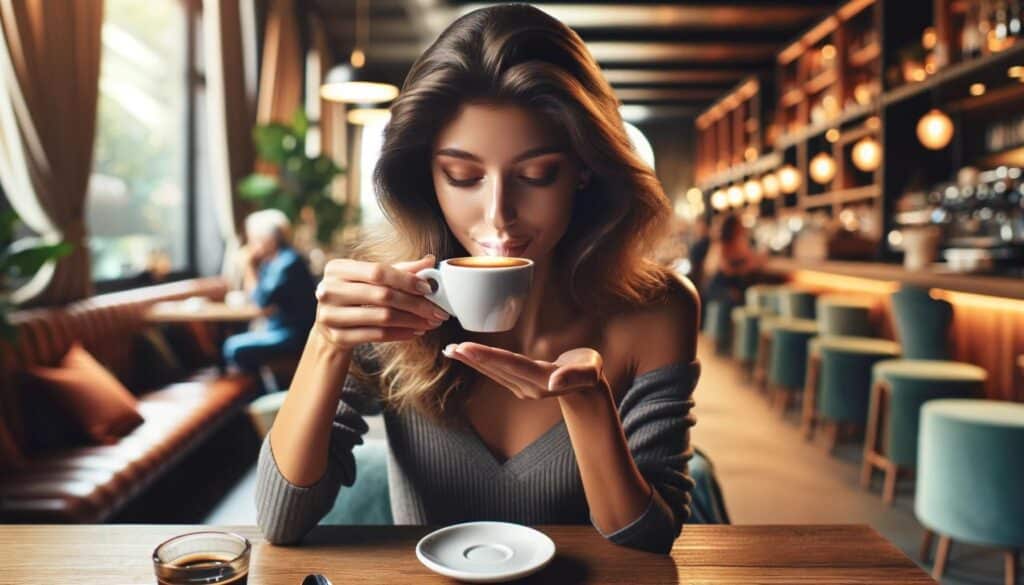
Ensuring your coffee is fresh can make a significant difference in taste. Here are some ways to determine the freshness of your coffee:
Signs of Stale Coffee
- Dull Aroma: Fresh coffee should have a strong, pleasant aroma. If the smell is weak or flat, it might be stale.
- Flat Taste: Stale coffee often tastes bland or bitter. Fresh coffee has a vibrant, full-bodied flavor.
- Oily Residue: Coffee oils degrade over time. If your coffee feels dry and lacks the usual oily residue, it could be stale.
Simple Tests to Check for Freshness
- Smell Test: Open the coffee bag and take a deep breath. Fresh coffee will have a rich, aromatic scent. If the aroma is faint or off, the coffee might be stale.
- Visual Inspection: Look for any visible changes in the coffee. Fresh coffee beans should have a shiny, oily surface. Ground coffee should have a consistent color and texture.
- Taste Test: Brew a small amount and taste it. Fresh coffee should taste rich and complex. If it tastes flat or bitter, it may have lost its freshness.
Checking Roast Date
- Importance of Roast Date: Always check the roast date on the coffee packaging. Coffee is best consumed within a few weeks of roasting.
- Buying Freshly Roasted Coffee: Purchase coffee from local roasters or sources that provide roast dates. This helps ensure you are getting the freshest possible coffee.
By regularly checking for these signs, you can ensure your coffee remains fresh, providing a better flavor and overall coffee experience.
Conclusion
Maintaining coffee freshness is key to enjoying the full flavor and aroma of your brew. Proper storage practices can make a significant difference in your coffee’s taste. By understanding the factors that affect coffee freshness and employing the best storage methods, you can ensure your coffee remains in peak condition.
Remember to:
- Use airtight containers to protect your coffee from air and moisture.
- Store coffee in a cool, dark place, away from heat and light.
- Avoid refrigerating or freezing coffee unless absolutely necessary, and then only in airtight, vacuum-sealed bags.
- Buy coffee in small quantities to keep it fresh.
- Choose the right storage solutions, such as vacuum-sealed bags or containers with CO2 valves, to extend the life of your coffee.
- Avoid common mistakes like using transparent containers or storing coffee near heat sources.
By following these tips and regularly checking the freshness of your coffee, you can enjoy a consistently great cup every time. Keep your coffee storage practices in check, and savor the difference in every sip.
FAQs about Storing Coffee
Q1: Can I store coffee in the refrigerator?
- A1: It’s not recommended to store coffee in the refrigerator as it can introduce moisture and absorb odors, which can degrade the flavor. Instead, store coffee in an airtight container at room temperature in a cool, dark place.
Q2: How long does coffee stay fresh after opening?
- A2: Once opened, coffee beans stay fresh for about two weeks, while ground coffee remains fresh for one to two weeks. To maximize freshness, store coffee in an airtight container and buy smaller quantities more frequently.
Q3: Is it okay to freeze coffee?
- A3: Freezing coffee can be an option for long-term storage, but it should be done properly. Use airtight, vacuum-sealed bags to prevent moisture and odor absorption. Thaw frozen coffee at room temperature before opening to avoid condensation.
Q4: What are the best containers for storing coffee?
- A4: The best containers for storing coffee are airtight and made from materials like stainless steel, ceramic, or tinted glass. These containers protect the coffee from air, moisture, and light, preserving its freshness.
Q5: Why does my coffee taste stale even though I store it properly?
- A5: If your coffee tastes stale despite proper storage, it might be due to the age of the coffee or improper handling before purchase. Always check the roast date and buy from reputable sources to ensure you’re getting fresh coffee.
Q6: How often should I clean my coffee storage container?
- A6: Clean your coffee storage container regularly to prevent any buildup of oils or residues that can affect the flavor of your coffee. A thorough cleaning once a month is generally sufficient.
Q7: Can I store coffee in its original packaging?
- A7: While some original packaging is designed to be airtight, it’s often better to transfer the coffee to a more durable, airtight container to ensure optimal freshness. If the original packaging has a one-way valve and a resealable top, it may be suitable for short-term storage.

